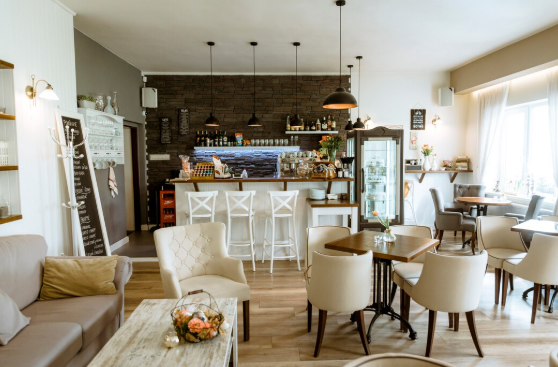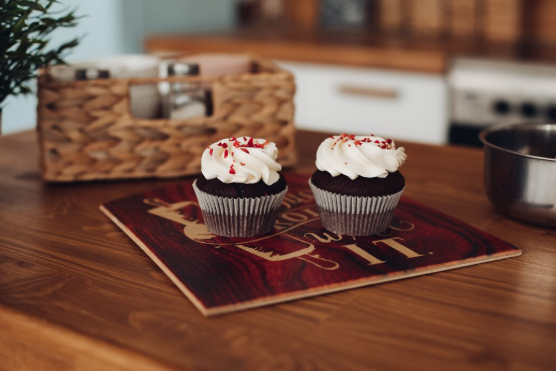Have you ever walked into a bar or café and immediately felt at home? A place where the energy is just right, the seats are comfortable, and you never want to leave? That feeling is no accident. It’s the magic of great interior design.
Creating a welcoming atmosphere is about more than just looking good. It’s about crafting an experience. Your space should tell a story and make every customer feel like they belong. This article will guide you through the key steps to achieve that perfect vibe. We will cover smart layout planning, mood-setting lighting, comfortable furniture, and those final sensory touches that turn first-time visitors into regulars.
First Impressions: Mastering Your Layout and Flow
Before you even think about color schemes or light fixtures, you need to plan your space. A good layout feels natural and easy to move through. A bad one feels cramped and confusing.
The Welcome Zone: Creating an Enticing Entrance
The entrance is your first chance to make a good impression. The goal is to be inviting, not intimidating. If possible, avoid a solid door that blocks the view inside. Using glass doors or an open entryway allows people to see the warm, lively atmosphere you’ve created. Make sure your signage is clear and the path to the door is unobstructed. This welcome area should say, “Come on in, we’ve been expecting you.”
Planning for Movement: The Customer Journey
Think about how people will move from the door to a seat, from their seat to the restroom, and how staff will move while serving. These pathways need to be clear and wide enough to avoid bumping into chairs. A good rule is to group your seating into different zones. You might have cozy booths along a wall for privacy, a large communal table for groups, and seating at the bar for solo guests. This creates natural flow and gives customers choices based on their mood.
Setting the Mood: The Power of Lighting
Lighting is one of the most powerful tools in your design toolbox. It can change the entire feel of a room in an instant.
Layering Your Light for Depth and Flexibility
The best lighting plans use a mix of three types of light:
- Ambient Light: This is the general, overall light in the room. Think of soft light from ceiling fixtures or track lighting. It should never be too harsh.
- Task Light: This is a brighter light for specific activities. A pendant light over a table or under-cabinet lighting at the bar helps people read menus and see their food.
- Accent Light: This is used to highlight design features. A small spotlight on a piece of art, or LED strips on a shelf, adds depth and visual interest.
Choosing the Right Color Temperature and Dimmers
Have you noticed how some lights feel warm and cozy, while others feel cold and sterile? That’s the color temperature. For a bar or café, you almost always want warm white or soft white bulbs. They create a relaxing and inviting glow. Cool white light can feel too much like an office or a hospital.
The most important investment you can make is installing dimmer switches. They give you total control. You can have brighter light for a busy lunch service and then dim the lights in the evening to create an intimate, cozy atmosphere.
Furniture: Where Style Meets Substance
Your furniture is what your customers physically interact with. It needs to be stylish, but it also must be incredibly durable and comfortable.
The Foundation of Comfort: Selecting the Right Seating
A mix of seating types caters to different customers. Plush banquettes or booths offer a sense of privacy and are great for couples or small groups. Armchairs can make a corner feel extra cozy. But one of the most important pieces, especially for a bar, is the stool.
The Stool Standard: A Closer Look at Commercial Bar Stools
Bar stools are more than just seats; they define the personality of your bar area. Choosing the right ones is critical. You need to consider the correct height for your counter, whether to have backs for extra comfort, and if a footrest is included—a small feature that makes a huge difference for comfort. Swivel tops allow customers to easily engage with people around them. Most importantly, they must be made from commercial-grade materials to withstand constant use. For a wide range of durable and stylish options, exploring a specialized collection of commercial bar stools can provide the perfect foundation for your seating area.
A Splash of Personality: Color and Décor
This is where you can let your brand’s personality shine. The colors and objects you choose tell your story.
Crafting Your Color Palette
Colors have a powerful effect on our mood. Warm earth tones like terracotta, deep green, and brown feel grounded and cozy. Rich blues and muted golds can feel sophisticated and luxurious. Brighter colors like yellow or orange can create an energetic and cheerful vibe, perfect for a daytime café. Choose a palette of two or three main colors to keep the space from feeling too busy.
Telling Your Story with Décor
Your décor should reflect the theme of your business. A local artisanal café might feature local artists’ work on the walls. A classic cocktail bar might use dark wood, framed vintage posters, and mirrored backsplashes. Remember the rule: “less is more.” A few well-chosen pieces have more impact than shelves crammed with knick-knacks. Mirrors are a great trick for making a small space feel larger and brighter.
The Final Touches: Engaging All the Senses
Great design goes beyond what people can see. To create a truly memorable experience, you need to engage all the senses.
The Sound of Atmosphere: Curating Your Playlist
Music sets the rhythm of your space. The genre should match your brand, but the volume is even more important. The music should be a background layer, not the main event. People should be able to hold a conversation without shouting. Create different playlists for different times of the day—perhaps more upbeat for the morning rush and more mellow for the evening wind-down.
The Scent of Success
Smell is directly linked to memory and emotion. Luckily, a bar or café is filled with natural, wonderful scents. The rich aroma of freshly ground coffee, the smell of baked bread, or the scent of herbs from the kitchen are all powerful mood-setters. You can enhance this with subtle, signature scents, like a specific candle in the bathroom or diffusers using natural essential oils. A consistent, pleasant scent will make your space unforgettable.
Conclusion
Creating an inviting bar or café is like conducting an orchestra. Every element—from the floor plan and the glow of the lights to the comfort of your commercial bar stools and the sound of the music—must work in harmony. It’s not about following one single trend, but about understanding how these pieces fit together to create a feeling.
By focusing on a smart layout, mood-setting lighting, durable and comfortable furniture, and thoughtful sensory details, you can build more than just a business. You can create a beloved local haunt, a second home for your customers, and a place where people love to spend their time.




